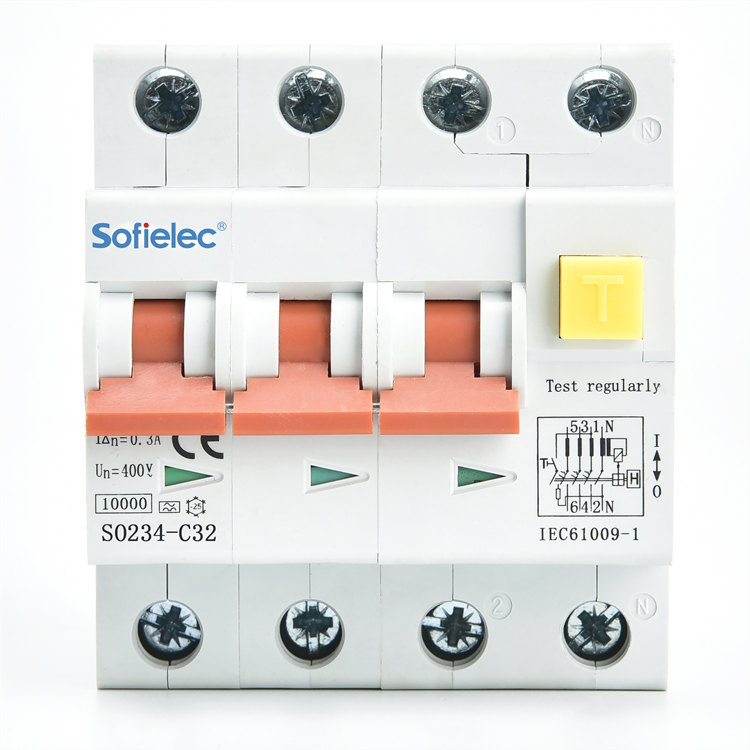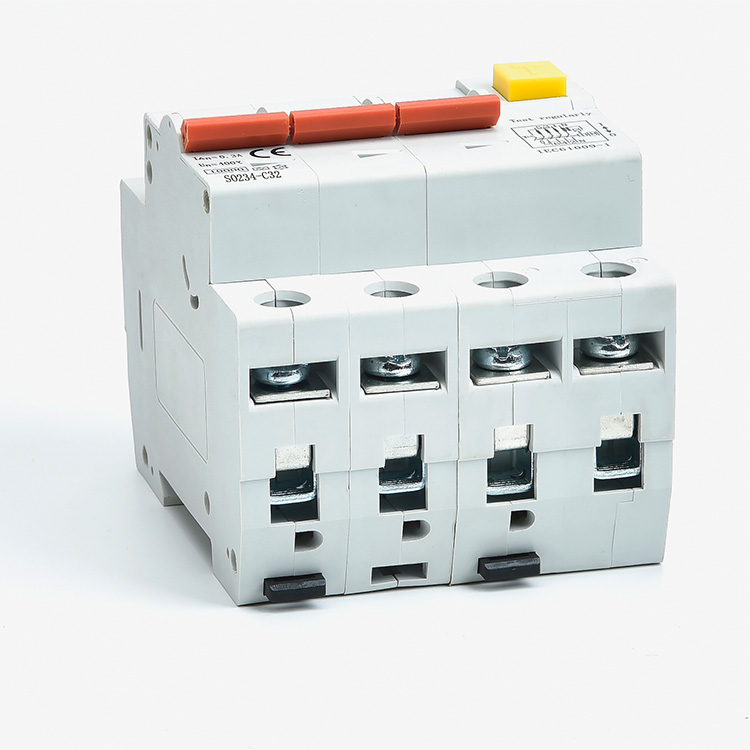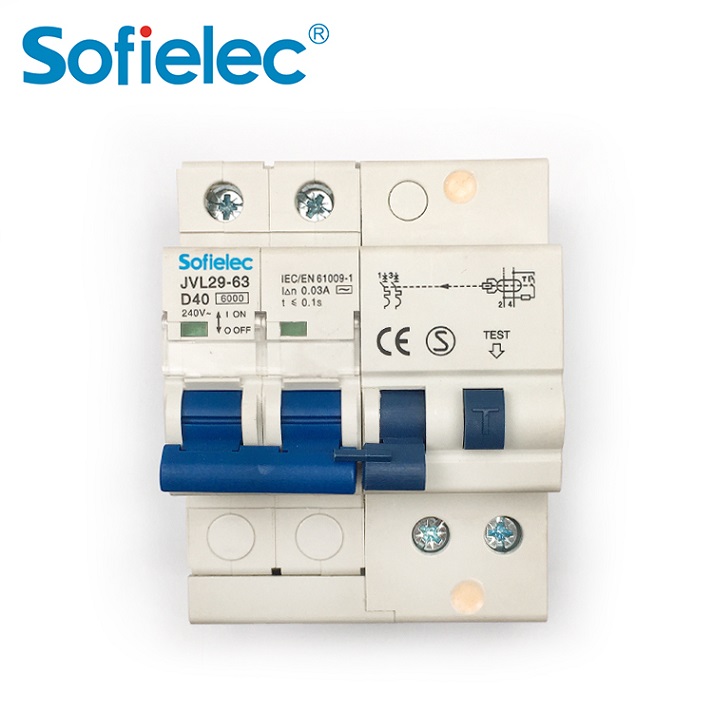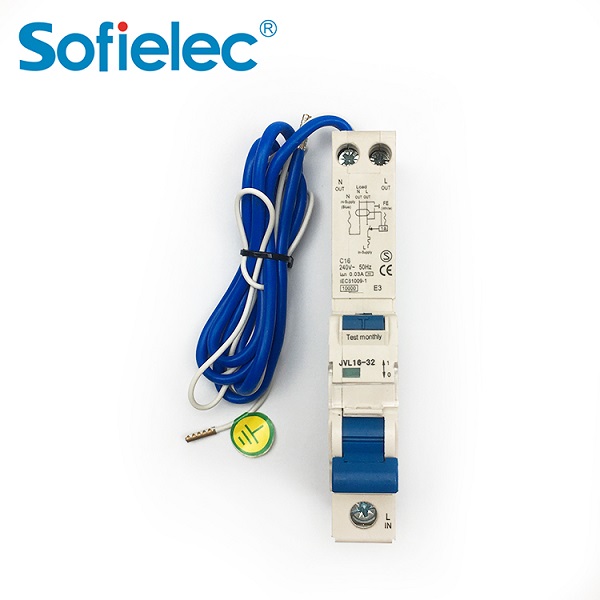Parameter information
SO232/SO234 Residual Current Circuit Breaker with Overcurrent Protection (RCBO)
Construction and Feature
■Provides protection against earth fault/leakage current, short-circuit, overload, and function
of isolation
■Provides complementary protection against direct contact by human body
■Effectively protects electric equipment against insulating failure
■Provides comprehensive protection to household and commercial distribution systems
Technical Data
■Type:Electro type, Electro-magnetic type
■Residual current characteristics: AC,A
■Pole No.: 1P+N ,3P+N
■Tripping curve: B, C
■Rated short-circuit capacity: 10kA
■Rated current (A): 1P+N:6, 10, 16, 20, 25, 32, 40,50,63A;
3P+N: 6, 10, 16, 20, 25, 32,40A;
■Rated voltage: 230/400VAC
■Rated frequency: 50/60Hz
■Rated residual operating current(mA): 30,100,300
■Tripping duration: instantaneous 0.1s
■Electro-mechanical endurance: 4000 cycles
■Connection terminal: pillar terminal with clamp
■Connection capacity:
□Flexible conductor 10mm2
□Rigid conductor 16mm2
■Installation:
□On symmetrical DIN rail 35mm
□Panel mounting
Product curve


> What are the four types of timer switches?
A time switch, often simply referred to as a timer, is a device that automatically controls when an electrical circuit is turned on or off. It's like a programmable ...
> Can You Replace a 10 Amp Breaker with a 20 Amp Breaker?
Replacing a 10-amp circuit breaker with a 20-amp one without a thorough professional evaluation is extremely dangerous and poses a significant fire hazard. Let's ana...
> What Makes a Circuit Breaker Essential for Home Electrical Safety?
Home electrical safety ranks high on every homeowner’s priority list, yet many overlook the quiet workhorse that prevents crises before they start. This device acts ...
> What Scenarios Require the Use of a Residual Current Circuit Breaker?
Electrical safety is a top priority in daily life and work, yet many people are unsure when to use a device that guards against electric shock. This article explains...





